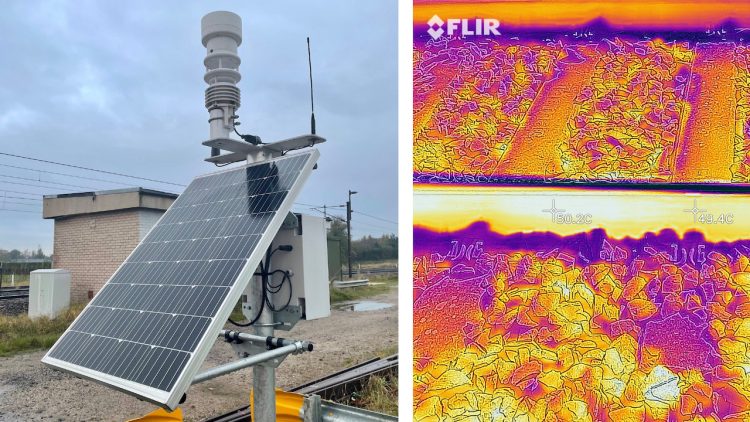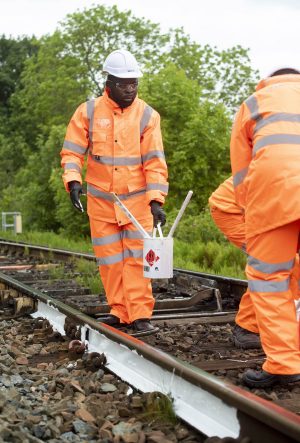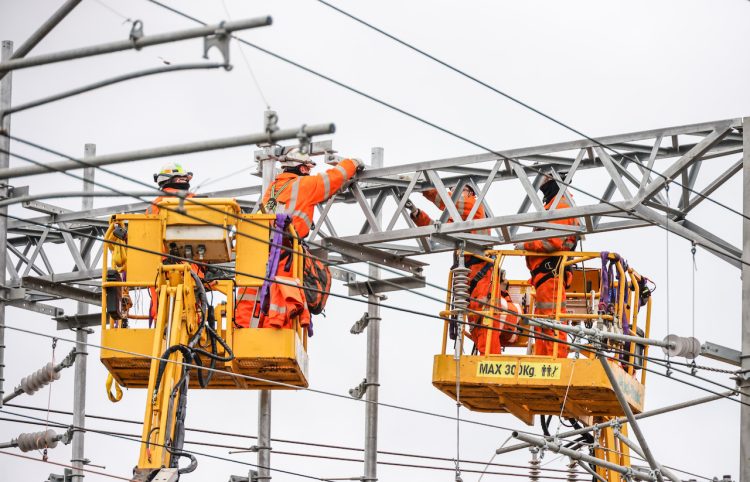The Emergency Intervention Unit is a mobile incident vehicle which is filled with innovative technology and equipment which gives full command and control facilities supporting the handling of emergency incidents for the Midlands rail network.
The impressive vehicle comes equipped with a drone, winch, toilet, cooking facilities, plugs and screens and, when supported by British Transport Police, has blue light capabilities which increases incident response.
The unit was commissioned earlier in 2022 to support the Commonwealth Games, with the drone being incredibly useful as an eye in the sky during an incident.
The Met Office has given an amber weather warning for extreme heat from Sunday the 17th of July and temperatures are predicted to hit a scorching 36°C in Birmingham on Monday and Tuesday.
Network Rail’s extreme weather actions teams (EWATs) are already preparing their tools to keep passengers and freight on the move during the heatwave.
It is likely that the hot weather will still cause delays despite the team’s best efforts and passengers are being given an early warning to check National Rail Enquiries regularly ahead of leaving for their journey.

Denise Wetton, Network Rail’s Central route director, said:
“Keeping passengers moving is always our top priority. But we want people to be prepared. If the soaring temperatures do lead to us having to put in place slower speeds for safety reasons, please bear with us as our engineers work to fix the problem. It may mean some journeys take longer.
“For those who must travel by rail, we’d remind people to carry some water with them so they can stay hydrated, and always check before travelling so they know exactly what to expect.”
Hot weather and, in particular, direct sunlight can cause track temperatures to reach over 50°C. Steel rails easily absorb heat and usually hover in the region of 20° more than the surrounding air temperature. As steel gets very hot, it expands and this can lead to rails bending, flexing and in extreme cases buckling. In order to stop this from happening, some sections of rail have been painted white to reflect the sun’s rays and also to stop the steel’s temperature from soaring. Trains will also run at lower speeds, which means that less strain is put on the rails.

The railway network of 25,000 volt overhead electric cables which are used to power trains are also easily affected by high temperatures, and can lead to the steel wires overheating and then hanging too low, getting snagged on passing trains and knocking out the electricity supply.
Lucy Wootton, head of the Grand Railway Collaboration which represents train operators serving the West Midlands, said:
“With high temperatures forecast at the start of next week, we are encouraging passengers to plan ahead, check their journeys and carry water to help keep cool. The latest travel information is always available from National Rail Enquiries or from individual train operators.”

2021 saw an investment of £1.3m on the installation of a system of 60 solar-powered weather stations to monitor extreme conditions in real-time and provide railway staff with the ability to keep more trains moving instead of imposing region-wide speed limits. The weather stations measure:
- Wind speed & direction
- Wind gust & direction
- Air temperature
- Relative humidity
- Dew point
- Rainfall totals
At the moment, the weather stations are being utilised to predict where the railway teams will be best deployed over Network Rail’s North West and Central region. Using the new technology means that Network Rail’s engineers are ready to respond to issues created by the heatwave and limits to speed imposed in local areas if required.
Railway staff are also preparing themselves for the challenges the heatwave will bring on the West Coast main line south of Crewe, in the West Midlands and on the Chiltern line.
Passengers travelling over the next few days are advised to check ahead of making their journey using www.nationalrail.co.uk in case trains need to run slower than usual.
For further information on how Network Rail deals with the hot weather, please visit: http://www.networkrail.co.uk/how-we-prevent-tracks-from-getting-too-hot/





Responses